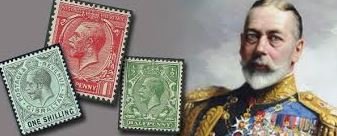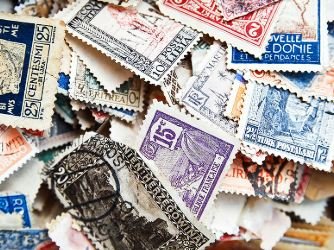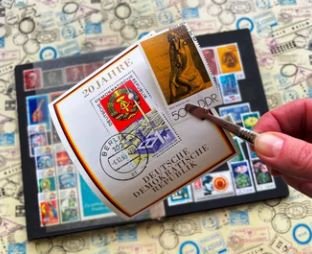Stamp collecting is one of the most rewarding and educational hobbies you can pursue. It connects you to the art and culture of different times and places and allows you to unlock the rich history and hidden gems of the past. Collecting stamps from different eras offers an incredible way to explore the evolution of countries, technologies, art styles, and historical events. In this article, we’ll explore why collecting stamps from different eras is such a fascinating journey and how you can get started on your own.

Why Collecting Stamps from Different Eras is So Appealing
Stamps are much more than just postage; they are a reflection of the world at a given time. Collecting stamps from different eras gives you a snapshot of history, art, politics, and culture, all encapsulated in tiny works of art. Each era of stamp production represents unique historical moments and technological advancements.
- Historical Significance: Stamps often commemorate significant events—wars, independence movements, scientific discoveries, or royal occasions. When you begin collecting stamps from different eras, you’re also collecting history, offering a tangible link to the past.
- Artistic Evolution: Stamps are miniature masterpieces, and their design has evolved dramatically over the centuries. From hand-engraved designs in the 19th century to modern, digitally created images, collecting stamps from different eras lets you appreciate the changing styles in graphic design, art, and printing techniques.
- Cultural Insights: Stamps often feature symbols of national identity, such as famous landmarks, cultural events, and historical figures. By collecting stamps from different eras, you gain insight into the values, achievements, and priorities of different societies throughout time.
Key Eras to Explore in Stamp Collecting
Collecting stamps from different eras can be an exciting and educational journey through time. Each era offers distinct stamps that tell different stories about the world. Here’s an overview of the most intriguing eras you can explore in stamp collecting:
1. The Early Postal Era (Pre-1900)
The beginning of modern stamp collecting dates back to the mid-19th century, when the first adhesive postage stamp, the Penny Black, was issued in Great Britain in 1840. Collecting stamps from different eras starting with this period allows you to discover some of the most coveted and valuable stamps in history.
- The Penny Black (1840): As the world’s first postage stamp, the Penny Black is highly prized by collectors. Its historical significance and rarity make it a key item for those collecting stamps from different eras.
- Victorian Stamps: The Victorian era was a time of rapid industrialization and empire building. Stamps from this period often feature portraits of Queen Victoria, and the designs are rich in symbolism.
Why It’s Fascinating:
The early stamps from this era showcase the birth of the postage system and the beginning of international communication through mail. Collecting stamps from different eras in this period offers a chance to own pieces of history that changed the world forever.

2. The Early 20th Century (1900-1940)
As the world entered the 20th century, technological innovations, political upheavals, and global conflicts influenced stamp design and usage. This period saw the introduction of color printing, the first airmail stamps, and the use of stamps to commemorate major world events like the First World War.
- Airmail Stamps: The first airmail stamps were issued in 1918 and are highly sought after by collectors. These stamps symbolize the major advancements in technology and the growing importance of air travel for mail delivery.
- World War I and II Stamps: Many countries issued stamps to commemorate key events or promote war efforts. Collecting stamps from different eras during the World Wars allows you to trace the role of philately in times of conflict.
Why It’s Fascinating:
Stamps from this period offer rich historical content, particularly from the First and Second World Wars, and showcase how stamps became tools for both communication and propaganda during tumultuous times. Collecting stamps from different eras during this period connects you with the major geopolitical events of the 20th century.
3. The Mid-20th Century (1940-1970)
This era marked a time of global reconstruction and decolonization. As former colonies gained independence, newly formed nations issued stamps to express their new identity and sovereignty. The mid-20th century also saw the rise of commemorative stamps, which were issued to honor important personalities, anniversaries, and achievements.
- Independence Stamps: Many countries issued stamps after gaining independence, often featuring national symbols, flags, or images of leaders. For example, India’s first stamp after independence features the Ashoka Pillar and Gandhi’s portrait.
- Commemorative Stamps: Countries began issuing stamps to commemorate major events like sporting achievements, cultural festivals, and even space exploration. Collecting these stamps allows you to reflect on the advancements in science, politics, and culture during this time.
Why It’s Fascinating:
The mid-20th century was a period of rapid political and cultural change. Collecting stamps from different eras during this time gives you the chance to witness the birth of new nations and the many global milestones that shaped the modern world.
4. The Late 20th Century (1970-2000)
By the late 20th century, stamp design had become more sophisticated, with the use of advanced printing techniques, holograms, and multi-color designs. Collecting stamps from this era provides a closer look at the modern world’s technological advancements and global unity.
- Modern Issues: Countries began issuing stamps to reflect technological achievements like the moon landing, the rise of computers, and the expansion of the internet.
- Commemorative and Thematic Stamps: Collectors can find stamps dedicated to various themes, including art, wildlife, and world peace. These stamps offer insight into the global priorities of the late 20th century.
Why It’s Fascinating:
The late 20th century was a time of tremendous change in terms of both technology and geopolitics. By collecting stamps from different eras during this period, you can witness the technological advancements that have reshaped the world and how stamps were used to document these changes.

How to document your stamp collection effectively, protecting the future value of your stamps and keeping your collection organized. By the end, you’ll know exactly what steps to take to safeguard your investments and ensure your collection is properly documented.
How to Get Started with Collecting Stamps from Different Eras
Collecting stamps from different eras is an exciting and educational journey, but it requires some planning and attention to detail. Here’s how you can begin:
- Research and Educate Yourself: Before starting, take some time to learn about the various stamp eras. Read books, join online forums, or attend philatelic events to expand your knowledge.
- Start Small: You don’t need to dive in and buy expensive stamps immediately. Begin with more affordable stamps from different eras and slowly build your collection. You can find stamps at local shops, estate sales, or online marketplaces.
- Organize Your Collection: Organize your stamps by era, country, or theme. Protect them from damage with stamp albums and proper storage techniques.
- Join a Stamp Collecting Community: Engage with other collectors and join philatelic societies to share knowledge, exchange stamps, and gain insights into collecting stamps from different eras.
- Focus on Your Interests: Whether you’re fascinated by the early stamps of the Victorian era or drawn to the designs of modern commemoratives, focus on the aspects of stamp collecting that interest you the most.
Conclusion
In conclusion, collecting stamps from different eras is not just about acquiring rare items—it’s about embarking on a journey through time, history, and culture. Each stamp offers a unique story and a window into the past, and by carefully collecting stamps from different periods, you can build a collection that spans centuries of human achievement. Whether you’re fascinated by the early days of postal systems or intrigued by the political upheavals of the 20th century, collecting stamps from different eras allows you to unlock hidden treasures and explore the fascinating evolution of human communication. Start your journey today and see where it takes you!




